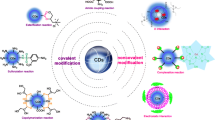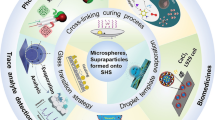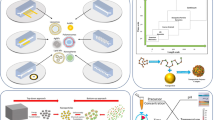Abstract
Proteins, the important biomacromolecules, have been magnificently applied to construct the protein self-assembled nanomaterials. The viruses are the largest reservoir of genetic material on the planet; the virus coat protein self-assemble is with very symmetric nanostructures that fascinate abundant interest and is one of the most fast emerging research area owing to its significant applications in practically every important region, i.e. in energy harvesting, in synthesis of nanoparticles, nanotubes, nanodrugs/medicine, nanobiotechnology, and superstructures. This review highlights the most recent studies on virus protein self-assembly with a focus on the recent literature about the effect of amino acids, pH, and charge on the virus protein self-assembly, recent examples of virus templates used for the self-assembly, and the problems occurring at the time of self-assembly that are also discussed.

The virus coat protein self-assemble is with very symmetric nanostructures that fascinate abundant interest and is one of the most fast emerging research areas owing to its significant applications in practically every important region. This review highlights the most recent studies on virus protein self-assembly with a focus on the recent literature about the effect of amino acids, pH, and charge on the virus protein self-assembly, recent examples of virus templates used for the self-assembly, and the problems occurring at the time of self-assembly that are also discussed.


Similar content being viewed by others
References
Abe S, Tabe H, Ijiri H, Yamashita K, Hirata K, Atsumi K, Shimoi T, Akai M, Mori H, Kitagawa S, Ueno T (2017) Crystal engineering of self-assembled porous protein materials in living cells. ACS Nano 11:2410–2419
Aldeek F, Safi M, Zhan N, Palui G, Mattoussi H (2013) Understanding the self-assembly of proteins onto gold nanoparticles and quantum dots driven by metal-histidine coordination. ACS Nano 7:10197–10210
Aniagyei SE, Kennedy CJ, Stein B, Willits DA, Douglas T, Young MJ, De M, Rotello VM, Srisathiyanarayanan D, Kao CC, Dragnea B (2009) Synergistic effects of mutations and nanoparticle templating in the self-assembly of cowpea chlorotic mottle virus capsids. Nano Lett 9:393–398
Asensio MA, Morella NM, Jakobson CM, Hartman EC, Glasgow JE, Sankaran B, Zwart PH, Tullman-Ercek D (2016) A selection for assembly reveals that a single amino acid mutant of the bacteriophage ms2 coat protein forms a smaller virus-like particle. Nano Lett 16:5944–5950
Aumiller WM, Uchida M, Biner DW, Miettinen HM, Lee B, Douglas T (2018) Stimuli responsive hierarchical assembly of p22 virus-like particles. Chem Mater 30:2262–2273
Azucena C, Eber FJ, Trouillet V, Hirtz M, Heissler S, Franzreb M, Fuchs H, Wege C, Gliemann H (2012) New approaches for bottom-up assembly of tobacco mosaic virus-derived nucleoprotein tubes on defined patterns on silica- and polymer-based substrates. Langmuir 28:14867–14877
Bink HH, Roepan SK, Pleij CW (2004) Two histidines of the coat protein of turnip yellow mosaic virus at the capsid interior are crucial for viability. Proteins 55:236–244
Bishop KJ, Wilmer CE, Soh S, Grzybowski BA (2009) Nanoscale forces and their uses in self-assembly. Small 5:1600–1630
Bruckman MA, Soto CM, McDowell H, Liu JL, Ratna BR, Korpany KV, Zahr OK, Blum AS (2011) Role of hexahistidine in directed nanoassemblies of tobacco mosaic virus coat protein. ACS Nano 5:1606–1616
Chapdelaine Y, Hohn T (1998) The cauliflower mosaic virus capsid protein: assembly and nucleic acid binding in vitro. Virus Genes 17:139–150
Cheung CL, Rubinstein AI, Peterson EJ, Chatterji A, Sabirianov RF, Mei WN, Lin T, Johnson JE, DeYoreo JJ (2010) Steric and electrostatic complementarity in the assembly of two-dimensional virus arrays. Langmuir 26:3498–3505
Daniel MC, Tsvetkova IB, Quinkert ZT, Murali A, De M, Rotello VM, Kao CC, Dragnea B (2010) Role of surface charge density in nanoparticle-templated assembly of bromovirus protein cages. ACS Nano 4:3853–3860
Dedeo MT, Duderstadt KE, Berger JM, Francis MB (2010) Nanoscale protein assemblies from a circular permutant of the tobacco mosaic virus. Nano Lett 10:181–186
Dehsorkhi A, Castelletto V, Hamley IW, Adamcik J, Mezzenga R (2013) The effect of pH on the self-assembly of a collagen derived peptide amphiphile. Soft Matter 9:6033–6036
Do TD, LaPointe NE, Economou NJ, Buratto SK, Feinstein SC, Shea JE, Bowers MT (2013) Effects of pH and charge state on peptide assembly: the YVIFL model system. J Phys Chem B 117:10759–10768
Dujardin E, Peet C, Stubbs GN, Culver J, Mann S (2003) Organization of metallic nanoparticles using tobacco mosaic virus templates. Nano Lett 3:413–417
Dutta K, Hu D, Zhao B, Ribbe AE, Zhuang J, Thayumanavan S (2017) Templated self-assembly of a covalent polymer network for intracellular protein delivery and traceless release. J Am Chem Soc 139:5676–5679
Fan T, Yu X, Shen B, Sun L (2017) Peptide self-assembled nanostructures for drug delivery applications. J Nanomater 2017:1–16
Ferrer-Miralles N, Rodriguez-Carmona E, Corchero JL, Garcia-Fruitos E, Vazquez E, Villaverde A (2015) Engineering protein self-assembling in protein-based nanomedicines for drug delivery and gene therapy. Crit Rev Biotechnol 35:209–221
Gradisar H, Jerala R (2014) Self-assembled bionanostructures: proteins following the lead of DNA nanostructures. J Nanobiotechnol 12:4
Habibi N, Kamaly N, Memic A, Shafiee H (2016) Self-assembled peptide-based nanostructures: smart nanomaterials toward targeted drug delivery. Nano Today 11:41–60
Hallan V, Gafni Y (2001) Tomato yellow leaf curl virus (TYLCV) capsid protein (CP) subunit interactions: implications for viral assembly. Arch Virol 146:1765–1773
He J, Niu Z, Tangirala R, Wang JY, Wei X, Kaur G, Wang Q, Jutz G, Böker A, Lee B, Pingali SV, Thiyagarajan P, Emrick T, Russell TP (2009) Self-assembly of tobacco mosaic virus at oil/water interfaces. Langmuir 25:4979–4987
He L, Porterfield Z, van der Schoot P, Zlotnick A, Dragnea B (2013) Hepatitis virus capsid polymorph stability depends on encapsulated cargo size. ACS Nano 7:8447–8454
Helbing C, Deckert-Gaudig T, Firkowska-Boden I, Wei G, Deckert V, Jandt KD (2018) Protein handshake on the nanoscale: how albumin and hemoglobin self-assemble into nanohybrid fibers. ACS Nano 12:1211–1219
Kitagishi H, Kakikura Y, Yamaguchi H, Oohora K, Harada A, Hayashi T (2009) Self-assembly of one- and two-dimensional hemoprotein systems by polymerization through heme-heme pocket interactions. Angew Chem Int Ed 48:1271–1274
Kostiainen MA, Pietsch C, Hoogenboom R, Nolte RJM, Cornelissen JJLM (2011) Temperature-switchable assembly of supramolecular virus–polymer complexes. Adv Funct Mater 21:2012–2019
Künzle M, Eckert T, Beck T (2016) Binary protein crystals for the assembly of inorganic nanoparticle superlattices. J Am Chem Soc 138:12731–12734
Lai YT, Tsai KL, Sawaya MR, Asturias FJ, Yeates TO (2013) Structure and flexibility of nanoscale protein cages designed by symmetric self-assembly. J Am Chem Soc 135:7738–7743
Lai YT, Hura GL, Dyer KN, Tang HY, Tainer JA, Yeates TO (2016) Designing and defining dynamic protein cage nanoassemblies in solution. Sci Adv 2:e1501855
Lee S-W, Belcher AM (2004) Virus-based fabrication of micro- and nanofibers using electrospinning. Nano Lett 4:387–390
Liu Y, Qu Z, Cao H, Sun H, Gao Y, Jiang X (2017) pH switchable nanoassembly for imaging a broad range of malignant tumors. ACS Nano 11:12446–12452
López-Laguna H, Unzueta U, Conchillo-Solé O, Sánchez-Chardi A, Pesarrodona M, Cano-Garrido O, Voltà E, Sánchez-García L, Serna N, Saccardo P, Mangues R, Villaverde A, Vázquez E (2018) Assembly of histidine-rich protein materials controlled through divalent cations. Acta Biomater 83:257–264
Lu MW, Lin CS (2003) Involvement of the terminus of grouper betanodavirus capsid protein in virus-like particle assembly. Arch Virol 148:345–355
Manuel-Cabrera CA, Vallejo-Cardona AA, Padilla-Camberos E, Hernandez-Gutierrez R, Herrera-Rodriguez SE, Gutierrez-Ortega A (2016) Self-assembly of hexahistidine-tagged tobacco etch virus capsid protein into microfilaments that induce IgG2-specific response against a soluble porcine reproductive and respiratory syndrome virus chimeric protein. Virol J 13:196
McCoy K, Uchida M, Lee B, Douglas T (2018) Templated assembly of a functional ordered protein macromolecular framework from p22 virus-like particles. ACS Nano 12:3541–3550
McManus JJ, Charbonneau P, Zaccarelli E, Asherie N (2016) The physics of protein self-assembly. Curr Opin Solid State Mater Sci 22:73–79
Mertz D, Cui J, Yan Y, Devlin G, Chaubaroux C, Dochter A, Alles R, Lavalle P, Voegel JC, Blencowe A, Auffinger P, Caruso F (2012) Protein capsules assembled via isobutyramide grafts: sequential growth, biofunctionalization, and cellular uptake. ACS Nano 6:7584–7594
Mikkila J, Rosilo H, Nummelin S, Seitsonen J, Ruokolainen J, Kostiainen MA (2013) Janus-dendrimer-mediated formation of crystalline virus assemblies. ACS Macro Lett 2:720–724
Molla MR, Prasad P, Thayumanavan S (2015) Protein-induced supramolecular disassembly of amphiphilic polypeptide nanoassemblies. J Am Chem Soc 137:7286–7289
Mout R, Yesilbag Tonga G, Wang L-S, Ray M, Roy T, Rotello VM (2017) Programmed self-assembly of hierarchical nanostructures through protein-nanoparticle coengineering. ACS Nano 11:3456–3462
Moyer TJ, Finbloom JA, Chen F, Toft DJ, Cryns VL, Stupp SI (2014) pH and amphiphilic structure direct supramolecular behavior in biofunctional assemblies. J Am Chem Soc 136:14746–14752
Mueller A, Eber FJ, Azucena C, Petershans A, Bittner AM, Gliemann H, Jeske H, Wege C (2011) Inducible site-selective bottom-up assembly of virus-derived nanotube arrays on rna-equipped wafers. ACS Nano 5:4512–4520
Nan L, Liu Y, Ji P, Feng H, Chen C, Wang J, Liu D, Cui Y, Wang Y, Li Y, Zhou E, Zhang G (2018) Trigger factor assisted self-assembly of canine parvovirus VP2 protein into virus-like particles in Escherichia coli with high immunogenicity. Virol J 15:103
Niu Z, Bruckman MA, Li S, Lee LA, Lee B, Pingali SV, Thiyagarajan P, Wang Q (2007) Assembly of tobacco mosaic virus into fibrous and macroscopic bundled arrays mediated by surface aniline polymerization. Langmuir 23:6719–6724
Okada T, Uto K, Sasai M, Lee CM, Ebara M, Aoyagi T (2013) Nano-decoration of the hemagglutinating virus of Japan envelope (HVJ-E) using a layer-by-layer assembly technique. Langmuir 29:7384–7392
Peng T, Lee H, Lim S (2012) Isolating a trimer intermediate in the self-assembly of E2 protein cage. Biomacromolecules 13:699–705
Perez JM, Simeone FJ, Saeki Y, Josephson L, Weissleder R (2003) Viral-induced self-assembly of magnetic nanoparticles allows the detection of viral particles in biological media. J Am Chem Soc 125:10192–10193
Perlmutter JD, Hagan MF (2015) Mechanisms of virus assembly. Annu Rev Phys Chem 66:217–239
Pille J, Cardinale D, Carette N, Di Primo C, Besong-Ndika J, Walter J, Lecoq H, van Eldijk MB, Smits FC, Schoffelen S, van Hest JC, Mäkinen K, Michon T (2013) General strategy for ordered noncovalent protein assembly on well-defined nanoscaffolds. Biomacromolecules 14:4351–4359
Rohovie MJ, Nagasawa M, Swartz JR (2017) Virus-like particles: next-generation nanoparticles for targeted therapeutic delivery. Bioeng Transl Med 2:43–57
Royston ES, Brown AD, Harris MT, Culver JN (2009) Preparation of silica stabilized tobacco mosaic virus templates for the production of metal and layered nanoparticles. J Colloid Interface Sci 332:402–407
Sakai F, Yang G, Weiss MS, Liu Y, Chen G, Jiang M (2014) Protein crystalline frameworks with controllable interpenetration directed by dual supramolecular interactions. Nat Commun 5:4634
Sapsford KE, Pons T, Medintz IL, Higashiya S, Brunel FM, Dawson PE, Mattoussi H (2007) Kinetics of metal-affinity driven self-assembly between proteins or peptides and cdse−zns quantum dots. J Phys Chem C 111:11528–11538
Spoerke ED, Boal AK, Bachand GD, Bunker BC (2013) Templated nanocrystal assembly on biodynamic artificial microtubule asters. ACS Nano 7:2012–2019
Sun J, DuFort C, Daniel MC, Murali A, Chen C, Gopinath K, Stein B, De M, Rotello VM, Holzenburg A, Kao CC, Dragnea B (2007) Core-controlled polymorphism in virus-like particles. Proc Natl Acad Sci U S A 104:1354–1359
Tang C, Smith AM, Collins RF, Ulijn RV, Saiani A (2009) Fmoc-diphenylalanine self-assembly mechanism induces apparent pKa shifts. Langmuir 25:9447–9453
Uchida M, McCoy K, Fukuto M, Yang L, Yoshimura H, Miettinen HM, LaFrance B, Patterson DP, Schwarz B, Karty JA, Prevelige PE Jr, Lee B, Douglas T (2018) Modular self-assembly of protein cage lattices for multistep catalysis. ACS Nano 12:942–953
Usselman RJ, Walter ED, Willits D, Douglas T, Young M, Singel DJ (2011) Monitoring structural transitions in icosahedral virus protein cages by site-directed spin labeling. J Am Chem Soc 133:4156–4159
Ventura J, Eron SJ, González-Toro DC, Raghupathi K, Wang F, Hardy JA, Thayumanavan S (2015) Reactive self-assembly of polymers and proteins to reversibly silence a killer protein. Biomacromolecules 16:3161–3171
von Schwedler UK, Stemmler TL, Klishko VY, Li S, Albertine KH, Davis DR, Sundquist WI (1998) Proteolytic refolding of the HIV-1 capsid protein amino-terminus facilitates viral core assembly. EMBO J 17:1555–1568
Waldeisen JR, Wang T, Ross BM, Lee LP (2011) Disassembly of a core-satellite nanoassembled substrate for colorimetric biomolecular detection. ACS Nano 5:5383–5389
Wen Y, Dong H, Wang K, Li Y, Li Y (2018) Self-templated, green-synthetic, size-controlled protein nanoassembly as a robust nanoplatform for biomedical application. ACS Appl Mater Interfaces 10:11457–11466
Yin S, Sun S, Yang S, Shang Y, Cai X, Liu X (2010) Self-assembly of virus-like particles of porcine circovirus type 2 capsid protein expressed from Escherichia coli. Virol J 7:166
Zeltins A (2018) Protein complexes and virus-like particle technology. In: Virus protein and nucleoprotein complexes. Springer, Singapore, pp 379–405
Zeng C, Rodriguez Lazaro G, Tsvetkova IB, Hagan MF, Dragnea B (2018) Defects and chirality in the nanoparticle-directed assembly of spherocylindrical shells of virus coat proteins. ACS Nano 12:5323–5332
Zhang X, Zhao X, Zhang Y, Niu S, Qu F, Zhang Y, Han C, Yu J, Li D (2013) N-terminal basic amino acid residues of Beet black scorch virus capsid protein play a critical role in virion assembly and systemic movement. Virol J 10:200
Zhang S, Zang J, Zhang X, Chen H, Mikami B, Zhao G (2016) Silent amino acid residues at key subunit interfaces regulate the geometry of protein nanocages. ACS Nano 10:10382–10388
Zhang Q, Xu TY, Zhao CX, Jin WH, Wang Q, Qu DH (2017) Dynamic self-assembly of gold/polymer nanocomposites: pH-encoded switching between 1D nanowires and 3D nanosponges. Chem Asian J 12:2549–2553
Zhang J, Wang X, Zhou K, Chen G, Wang Q (2018) Self-assembly of protein crystals with different crystal structures using tobacco mosaic virus coat protein as a building block. ACS Nano 12:1673–1679
Zhao Q, Chen W, Chen Y, Zhang L, Zhang J, Zhang Z (2011) Self-assembled virus-like particles from rotavirus structural protein VP6 for targeted drug delivery. Bioconjug Chem 22:346–352
Zhao L, Shanpeng Q, Liu J (2016) Protein self-assembly: technology and strategy. J Sci China Chem 59:1531–1540
Zhao L, Zou H, Zhang H, Sun H, Wang T, Pan T, Li X, Bai Y, Qiao S, Luo Q, Xu J, Hou C, Liu J (2017) Enzyme-triggered defined protein nanoarrays: efficient light-harvesting systems to mimic chloroplasts. ACS Nano 11:938–945
Zhou K, Li F, Dai G, Meng C, Wang Q (2013) Disulfide bond: dramatically enhanced assembly capability and structural stability of tobacco mosaic virus nanorods. Biomacromolecules 14:2593–2600
Zhou K, Zhang J, Wang Q (2015) Site-selective nucleation and controlled growth of gold nanostructures in tobacco mosaic virus nanotubulars. Small 11:2505–2509
Zhou K, Eiben S, Wang Q (2016) Coassembly of tobacco mosaic virus coat proteins into nanotubes with uniform length and improved physical stability. ACS Appl Mater Interfaces 8:13192–13196
Zhou K, Zang J, Chen H, Wang W, Wang H, Zhao G (2018) On-axis alignment of protein nanocage assemblies from 2D to 3D through the aromatic stacking interactions of amino acid residues. ACS Nano 12:11323–11332
Funding
Author RDY is thankful to the Department of Science & Technology (Science and Engineering Research Board, National Post-Doctoral Fellowship, PDF/2016/002438) for providing financial support.
Author information
Authors and Affiliations
Corresponding author
Ethics declarations
Conflict of interest
The authors declare that there are no conflicts of interest.
Additional information
Publisher’s note
Springer Nature remains neutral with regard to jurisdictional claims in published maps and institutional affiliations.
Rights and permissions
About this article
Cite this article
Chaudhary, A., Yadav, R.D. A review on virus protein self-assembly. J Nanopart Res 21, 254 (2019). https://doi.org/10.1007/s11051-019-4669-0
Received:
Accepted:
Published:
DOI: https://doi.org/10.1007/s11051-019-4669-0




